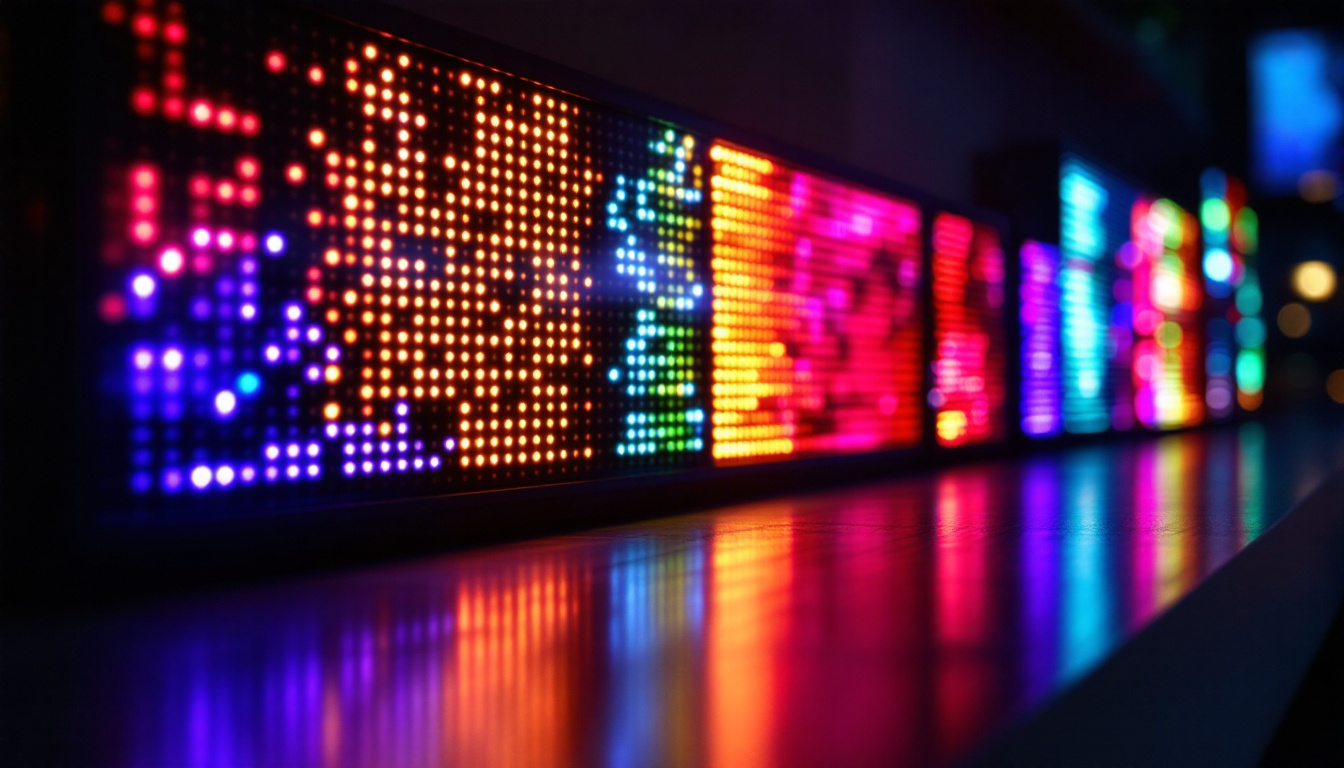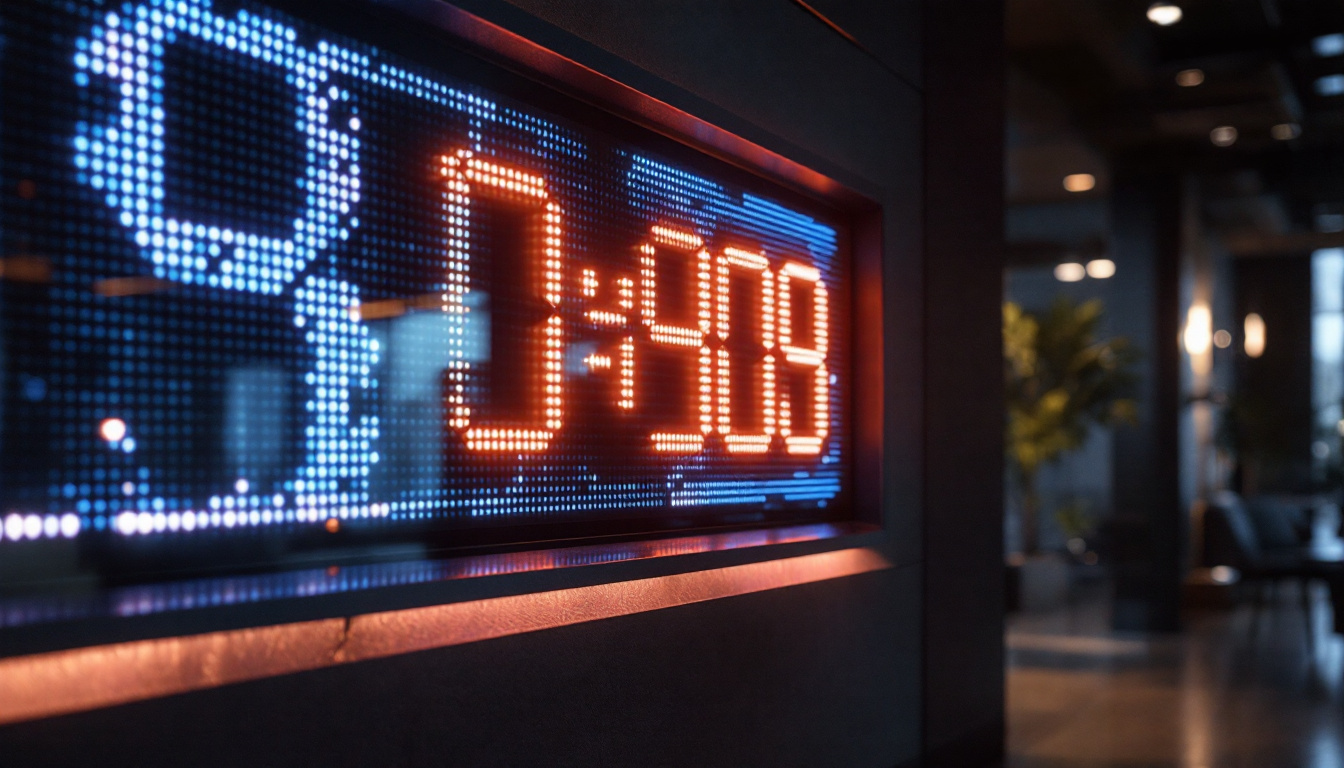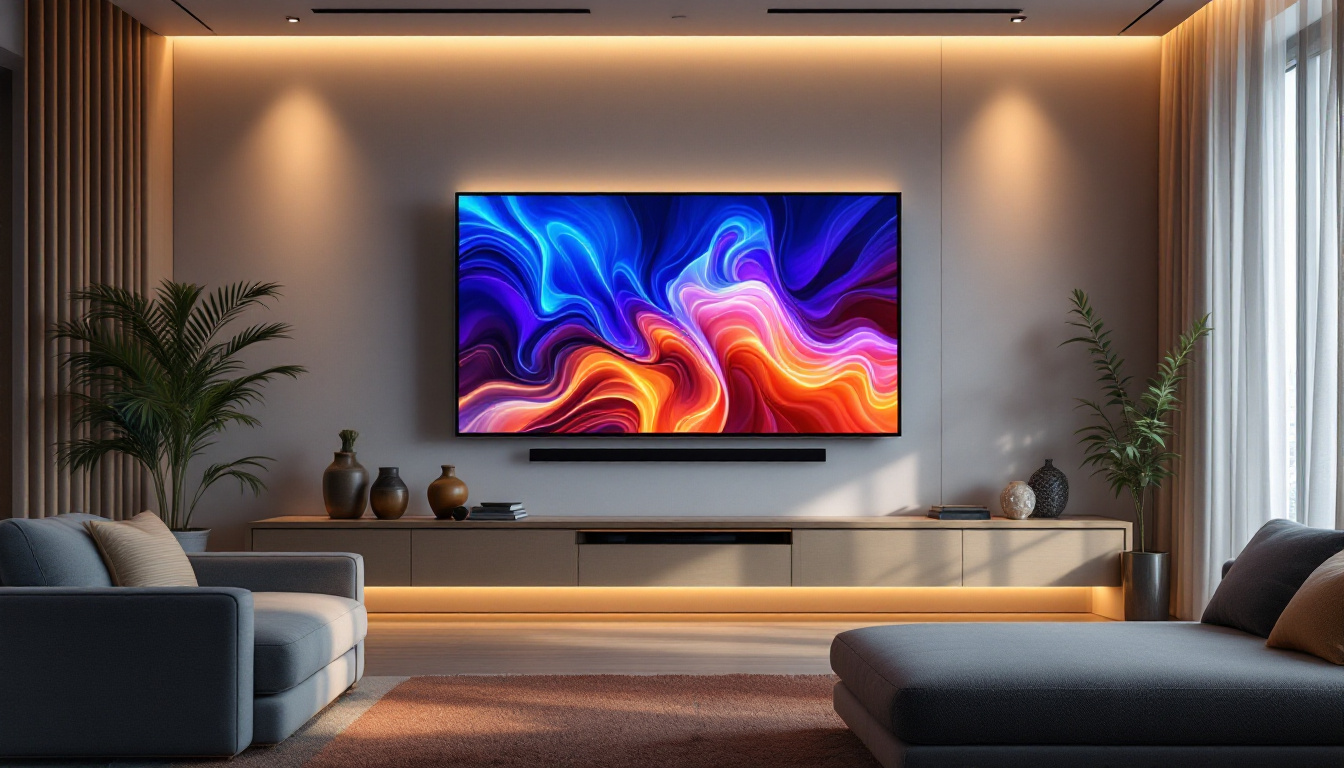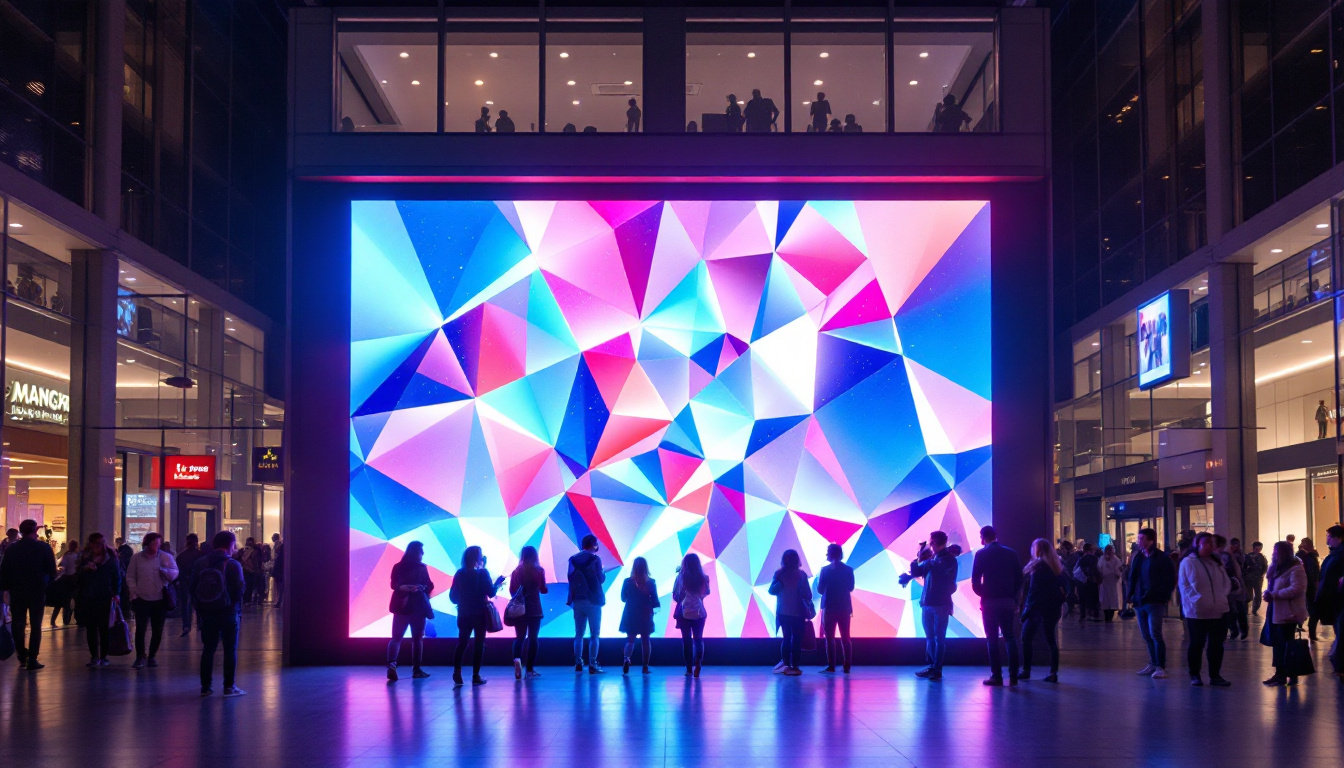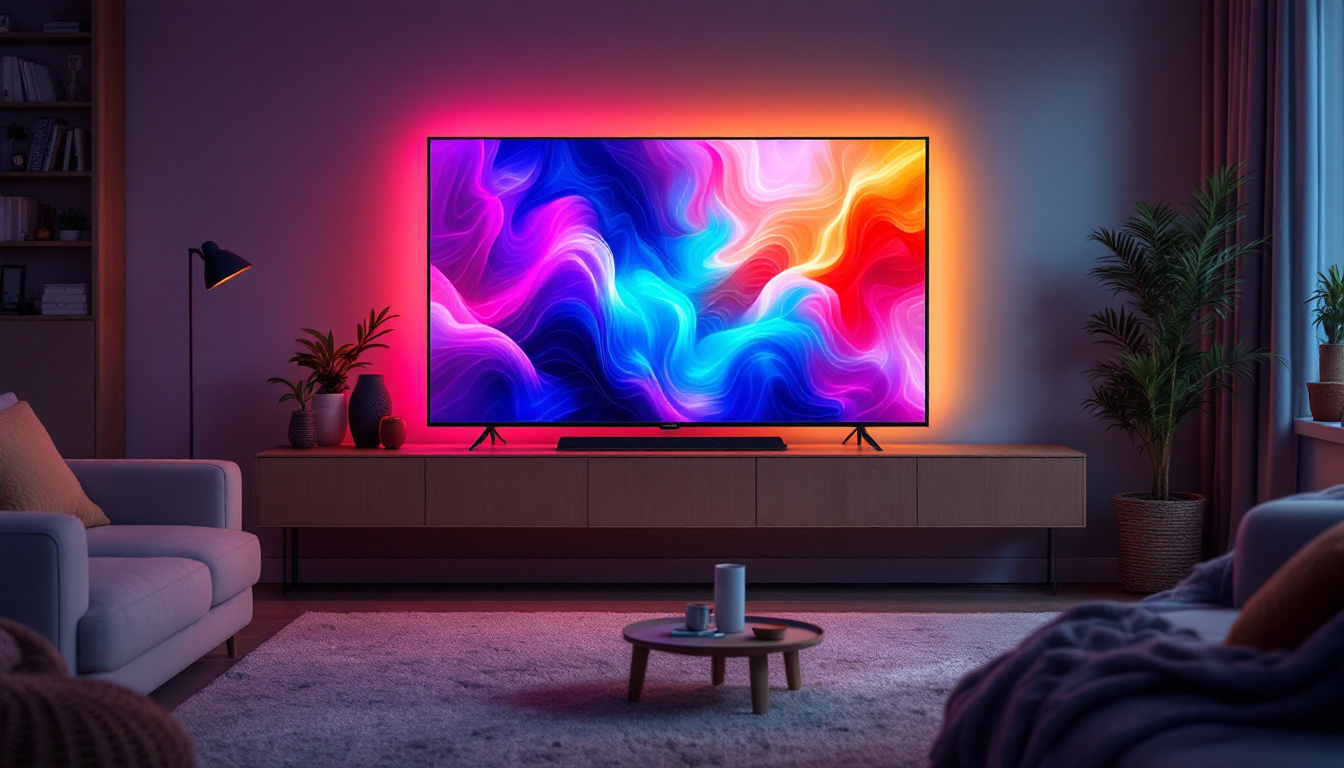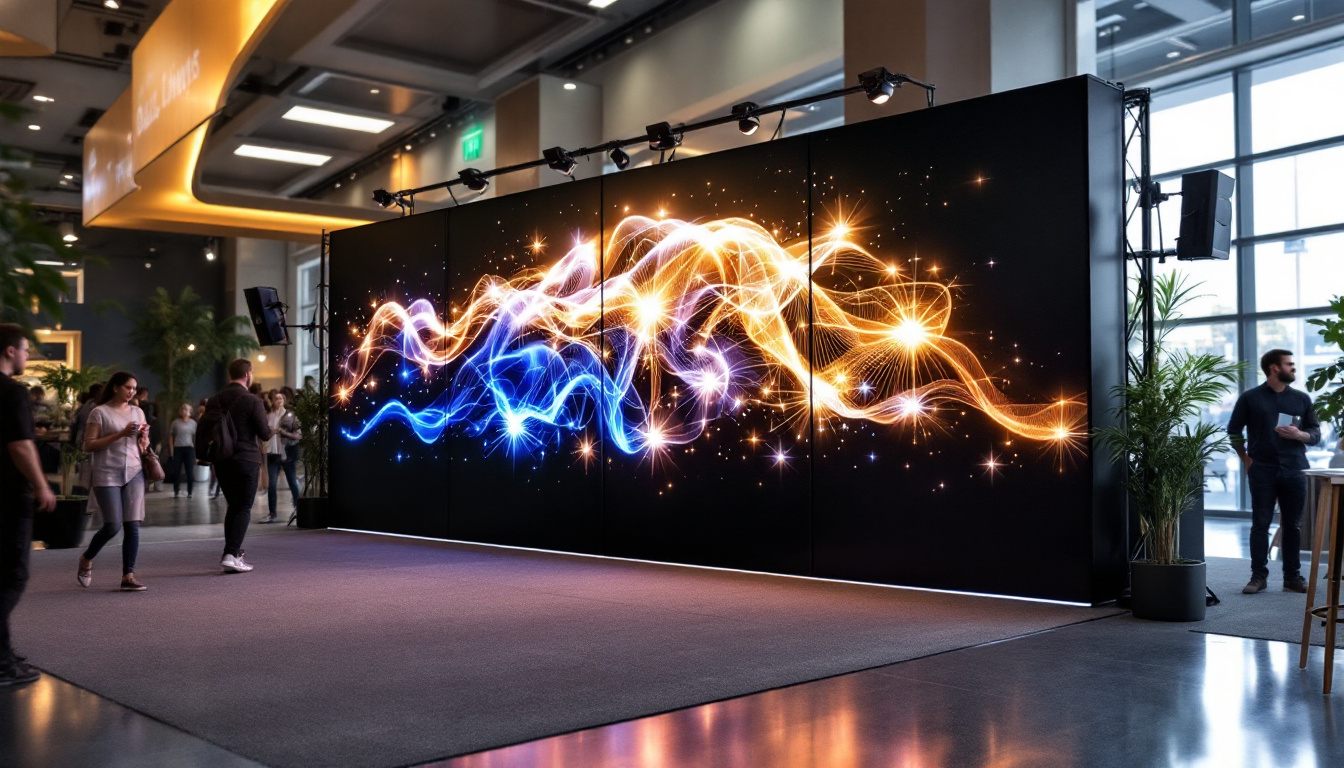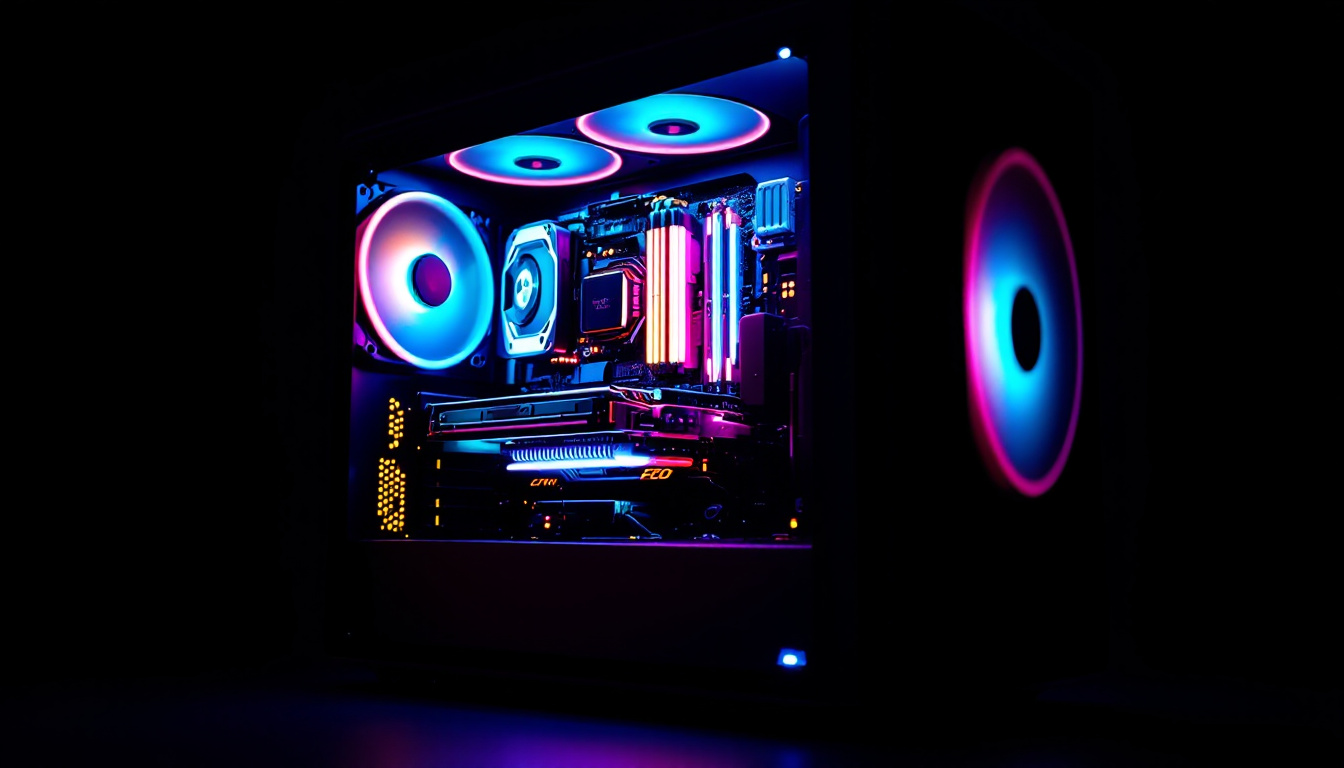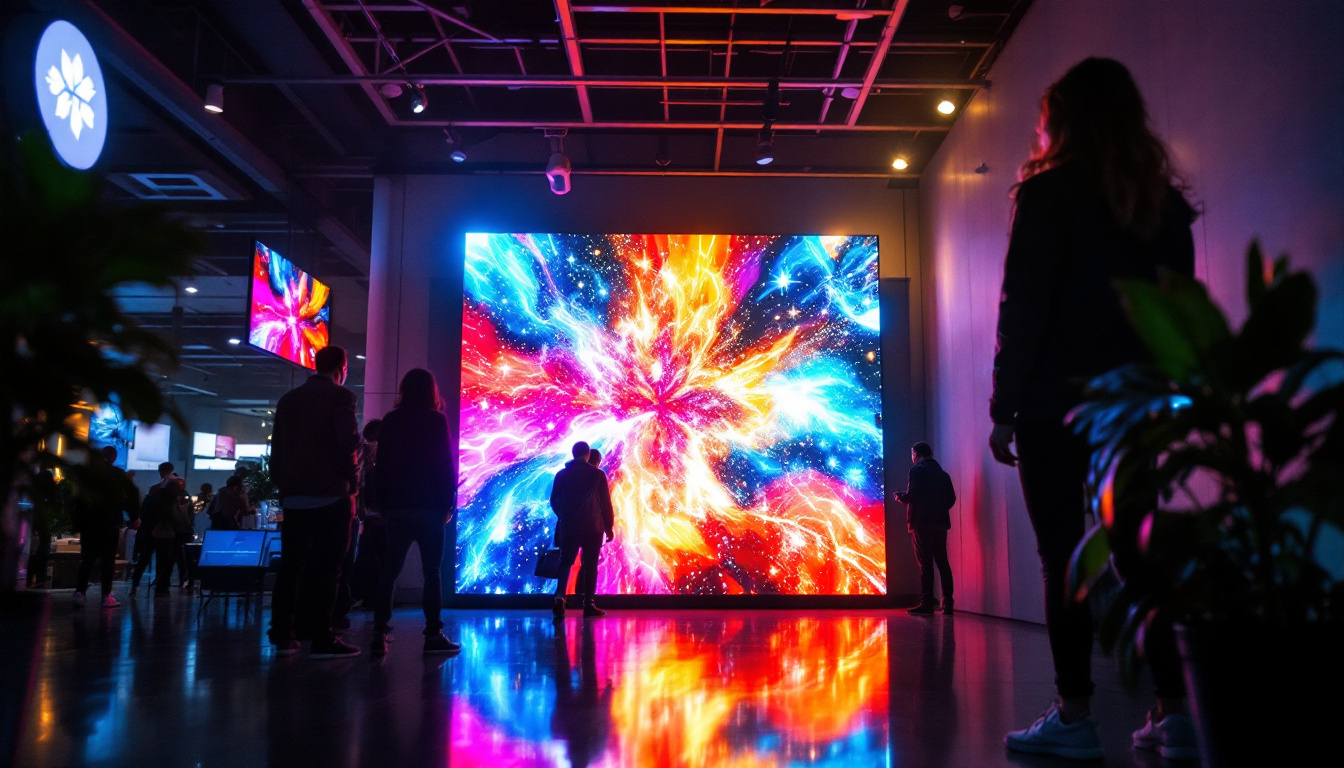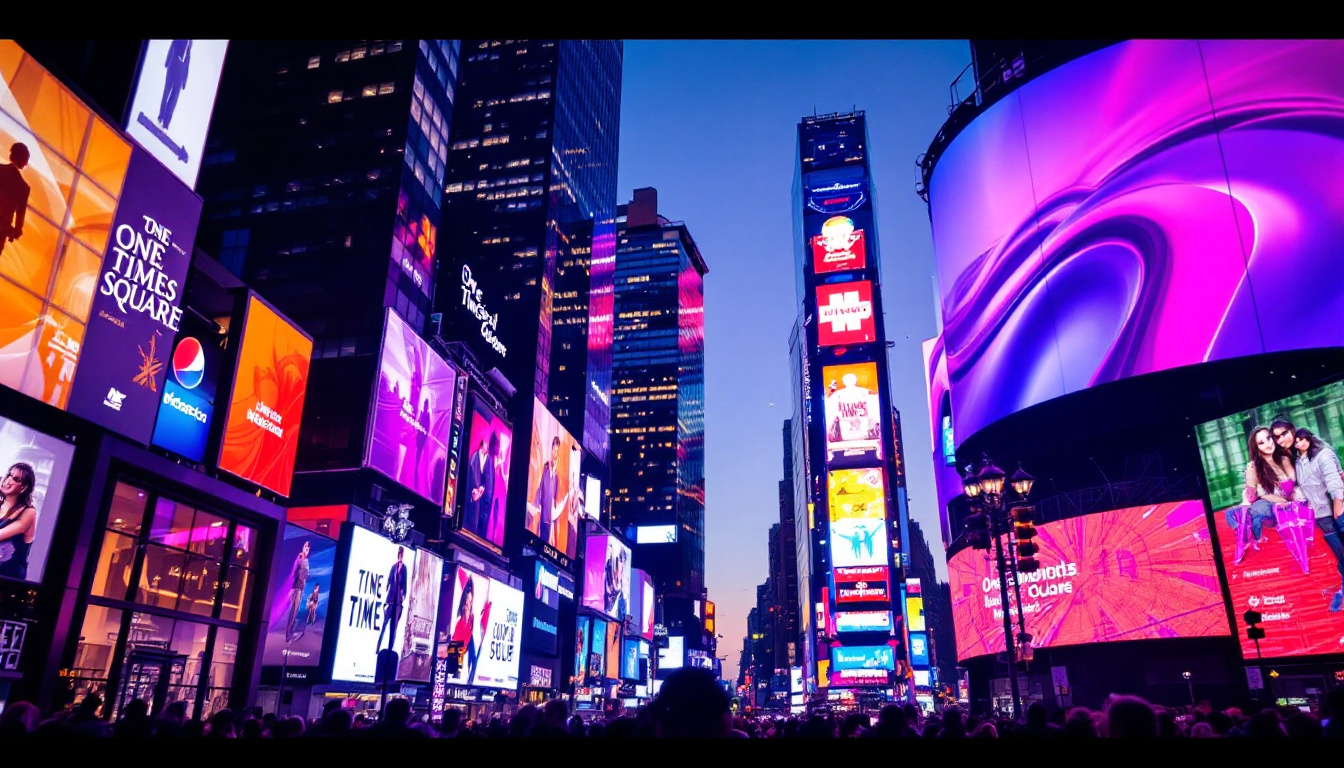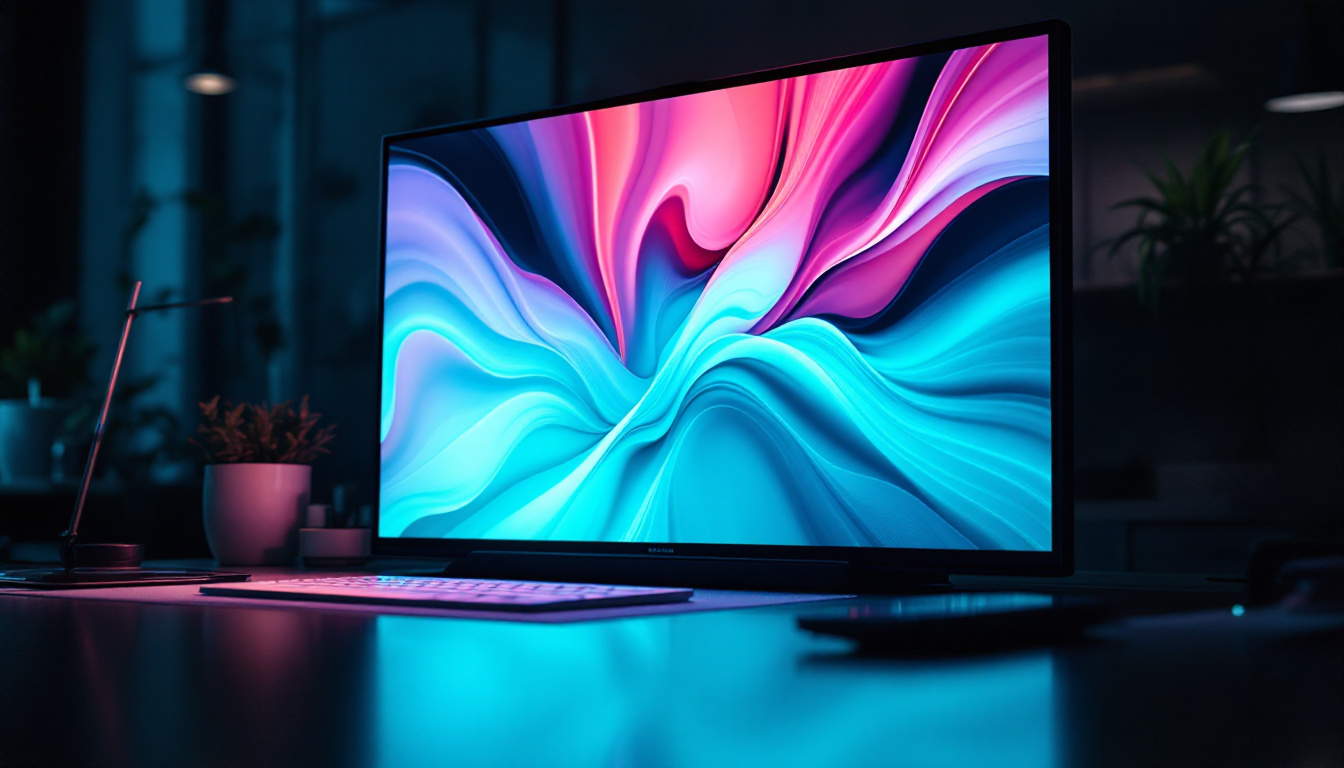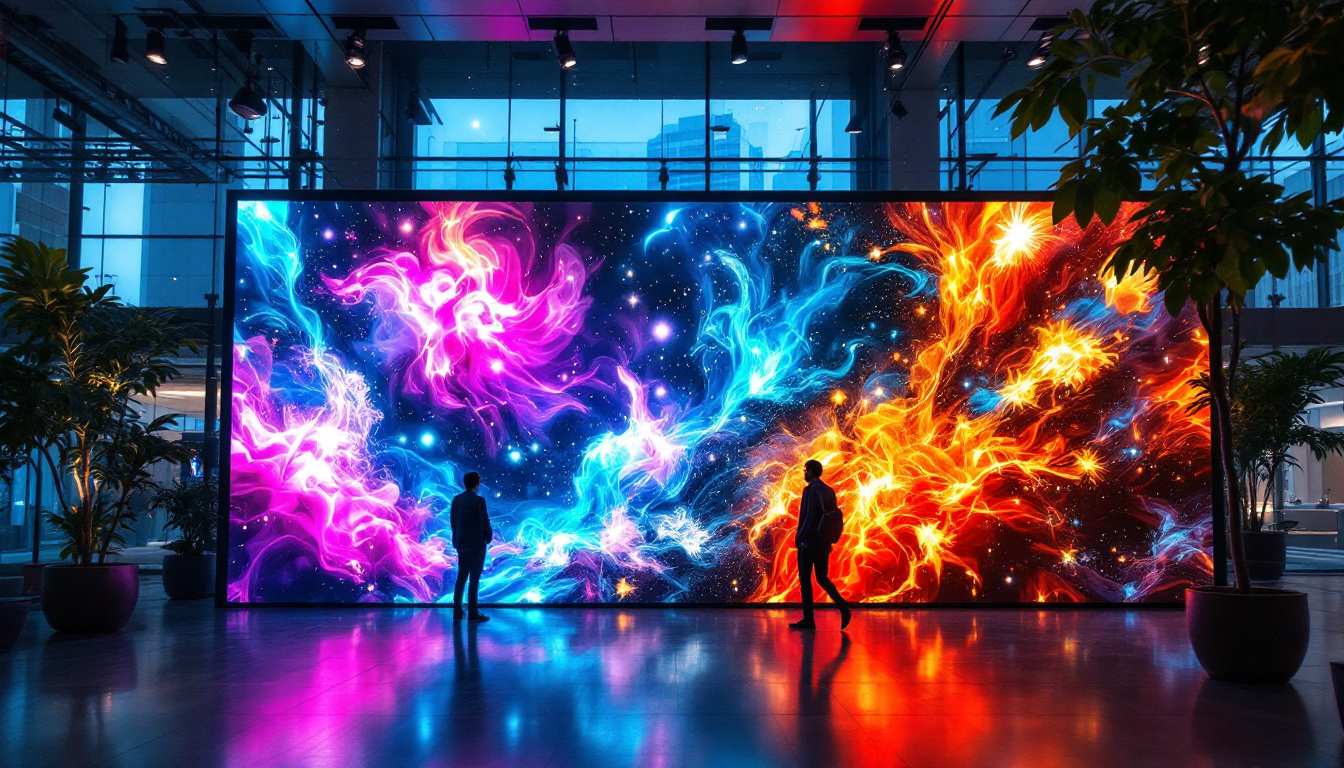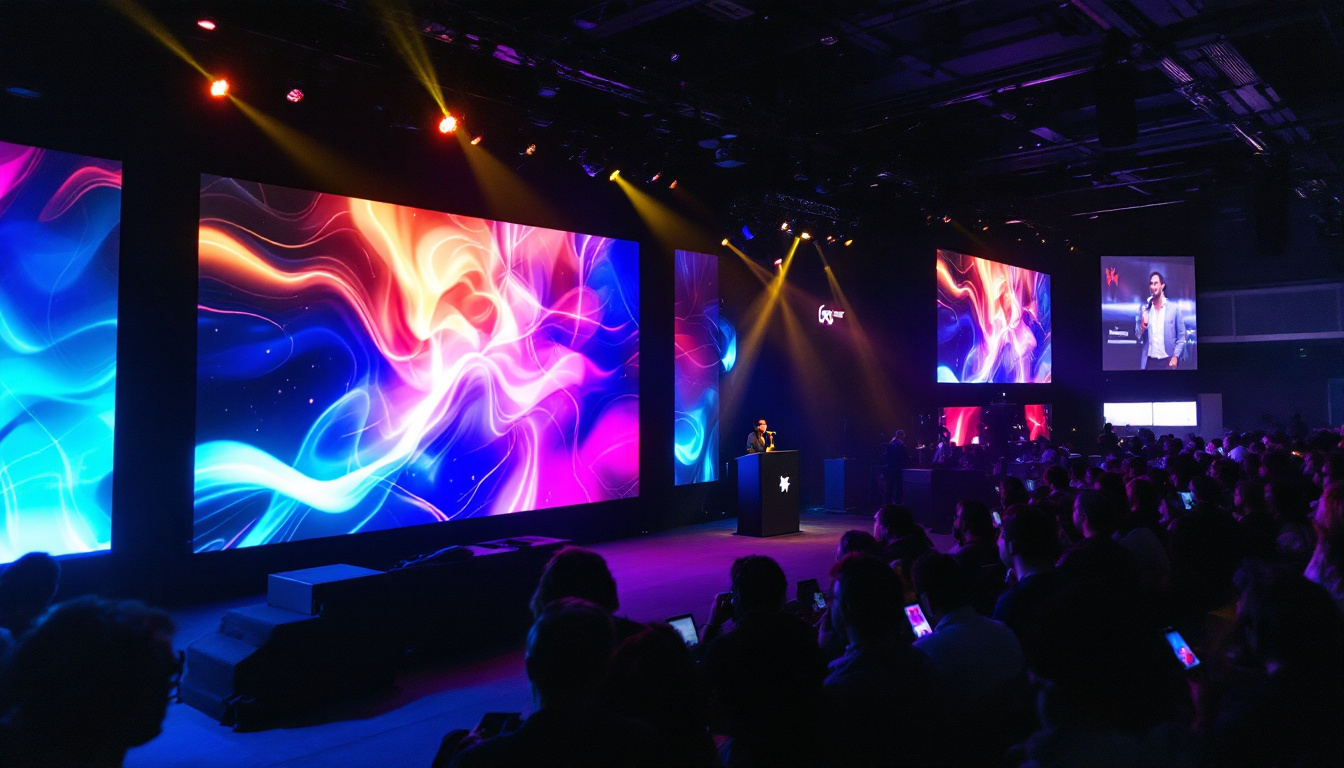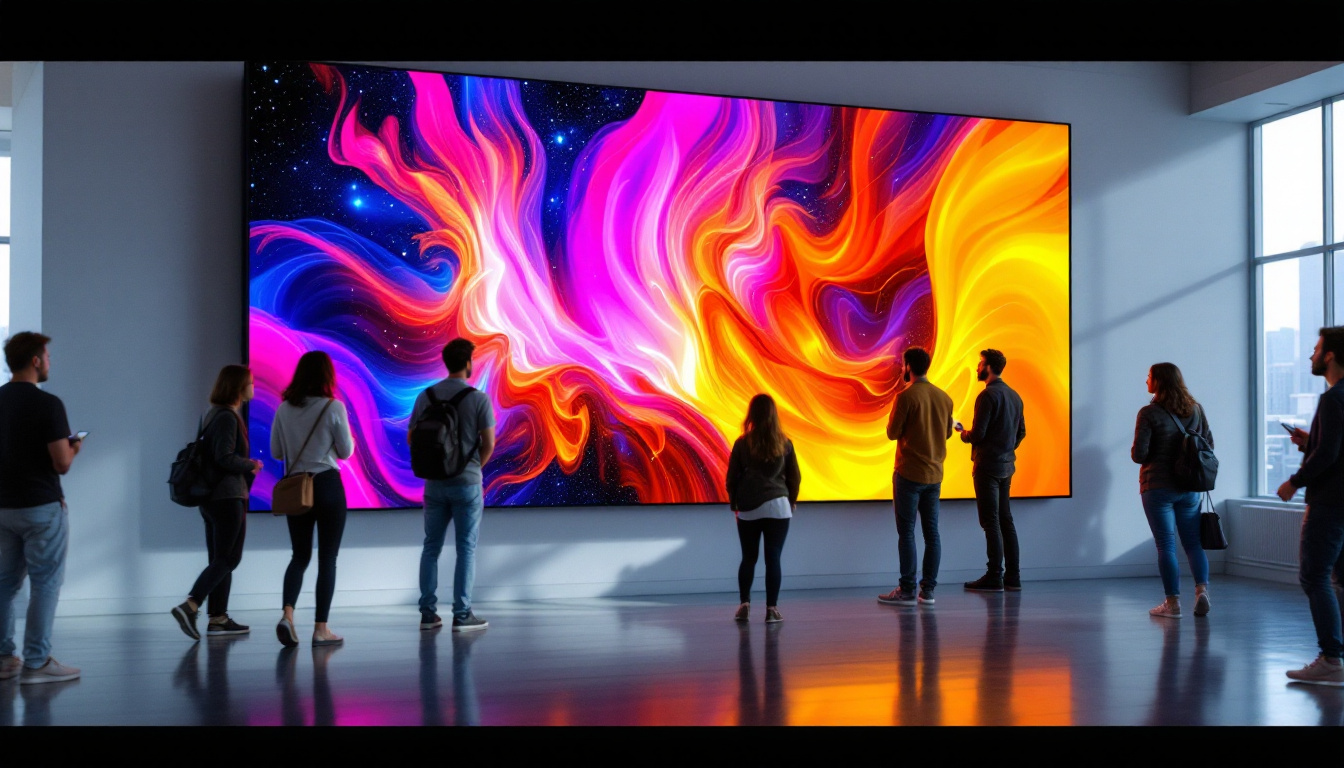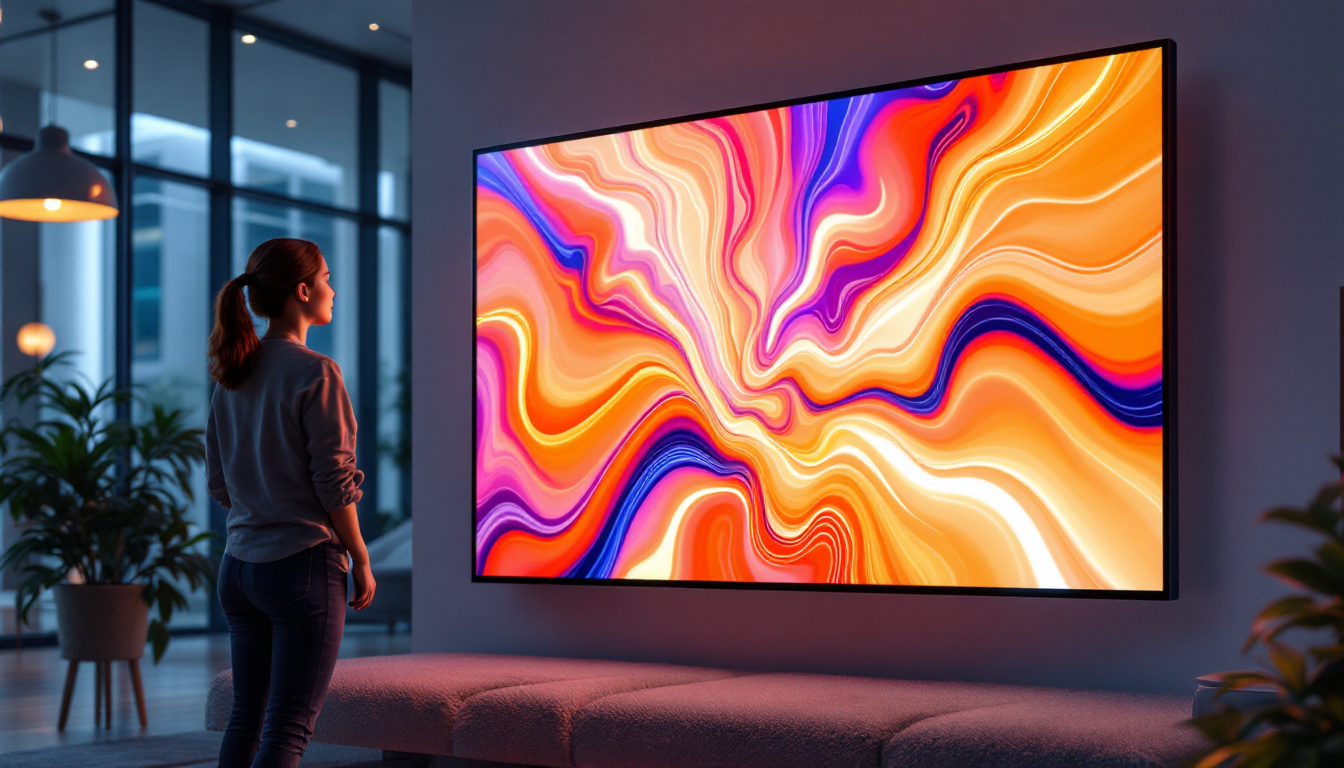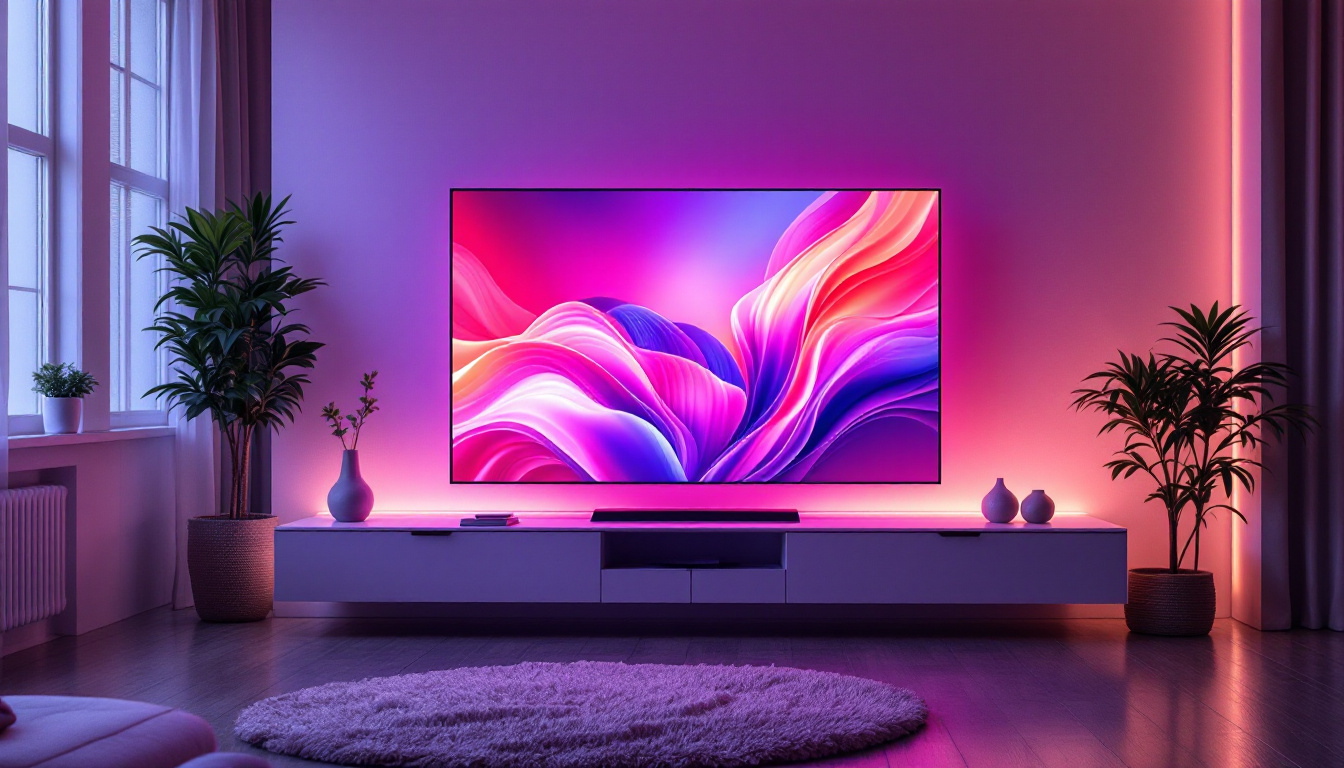In the ever-evolving world of display technology, understanding the native contrast ratio of LED displays is crucial for both consumers and professionals alike. The native contrast ratio serves as a key indicator of a display’s performance, particularly in terms of color depth and image clarity. This article delves into the intricacies of native contrast ratio, its implications for LED displays, and how it impacts the overall viewing experience.
What is Native Contrast Ratio?
The native contrast ratio refers to the difference in luminance between the brightest white and the darkest black that a display can produce without any additional processing or enhancement. It is a fundamental specification that helps gauge the quality of an LED display. A higher native contrast ratio typically indicates a display’s ability to showcase deeper blacks and more vibrant colors.
In practical terms, the native contrast ratio is expressed as a numerical value, often represented as a ratio (e.g., 1000:1). This means that the brightest part of the image is 1000 times brighter than the darkest part. Understanding this ratio is essential for evaluating how well a display can reproduce images, especially in darker scenes where detail can easily be lost. For instance, in a movie with a night scene, a display with a high native contrast ratio will render the shadows with clarity, allowing viewers to appreciate the nuances of the scene rather than just a muddled dark mass.
Importance of Native Contrast Ratio
The significance of the native contrast ratio cannot be overstated. It plays a vital role in determining the overall visual quality of an LED display. A higher contrast ratio enhances the viewing experience by providing more depth and realism to images. This is particularly important in applications such as gaming, graphic design, and film production, where accurate color representation and detail are paramount. For gamers, a display that can faithfully reproduce the stark contrasts in a horror game, for example, can heighten the sense of immersion and tension, making every jump scare more impactful.
Moreover, a higher native contrast ratio can reduce eye strain during prolonged viewing sessions. Displays with lower contrast ratios may result in washed-out images, making it difficult for viewers to distinguish between subtle color variations. Therefore, investing in a display with a good native contrast ratio is not only beneficial for aesthetics but also for comfort. In environments where users spend hours in front of screens, such as offices or home theaters, the difference can be significant. Enhanced contrast can lead to a more engaging experience, whether it’s watching a film or working on detailed graphics, as it allows for longer viewing times without discomfort. Additionally, the impact of native contrast ratio extends beyond individual use; in professional settings, it can influence the accuracy of color grading and image editing, ensuring that what is seen on screen closely matches the intended vision of the creator.
How Native Contrast Ratio is Measured
Measuring the native contrast ratio involves specific methodologies that ensure accuracy. Typically, this measurement is conducted in a controlled environment to eliminate external light interference. The process includes displaying a pure white image followed by a pure black image, measuring the luminance of both, and calculating the ratio. This precise method allows for a clear understanding of how well a display can differentiate between the brightest and darkest elements of an image, which is crucial for tasks requiring color accuracy and depth perception.
Moreover, the instruments used for measurement, such as photometers or colorimeters, play a vital role in determining the accuracy of the contrast ratio. These devices are calibrated to ensure that they can detect even the slightest variations in light intensity, providing a reliable reading that reflects the display’s true capabilities. The results can vary significantly depending on the quality of the measuring equipment, making it essential to use high-precision tools for the most accurate assessments.
Factors Affecting Contrast Ratio Measurement
Several factors can influence the measurement of the native contrast ratio. Ambient light conditions are one of the most significant variables. In a brightly lit room, reflections and glare can distort the perceived contrast ratio, leading to inaccurate assessments. Therefore, measurements are ideally taken in a darkened environment to ensure that the display’s true capabilities are showcased. This controlled setting allows for a more authentic representation of the display’s performance, ensuring that consumers can make informed decisions based on accurate data.
Additionally, the technology used in the display itself can affect the contrast ratio. For instance, OLED displays often boast superior contrast ratios compared to traditional LED displays due to their ability to turn off individual pixels, resulting in true blacks. Understanding these factors is essential for anyone looking to evaluate or compare displays accurately. Furthermore, the age and calibration of the display can also impact its performance; older screens may not deliver the same contrast levels as when they were new, and improper calibration can lead to skewed results. Regular maintenance and calibration are recommended to keep displays performing at their best.
Dynamic vs. Static Contrast Ratio
It is also important to distinguish between dynamic and static contrast ratios. While the native contrast ratio is a static measurement, dynamic contrast ratios are often advertised by manufacturers as a way to highlight a display’s performance in varying conditions. Dynamic contrast ratios involve adjusting the brightness of the backlight in real-time, which can lead to artificially inflated numbers. This technique can create the illusion of deeper blacks and brighter whites, but it may not accurately reflect the display’s actual performance during typical viewing scenarios.
Consumers should be cautious when interpreting dynamic contrast ratios, as they can often misrepresent the actual viewing experience. Static contrast ratios provide a more reliable benchmark for assessing a display’s performance, particularly when it comes to consistent image quality across various content types. Additionally, understanding the content being viewed is crucial; for example, high-contrast scenes in movies may showcase a display’s dynamic capabilities, while static images may reveal limitations in the static contrast ratio. This nuanced understanding helps consumers appreciate the complexities of display technology and make choices that align with their viewing preferences and needs.
Impact of Native Contrast Ratio on Viewing Experience
The native contrast ratio significantly influences the overall viewing experience across different applications. Whether it’s for gaming, watching movies, or professional graphic work, the contrast ratio plays a pivotal role in how images are perceived.
Gaming and Entertainment
For gamers, a high native contrast ratio can enhance immersion by providing richer colors and more defined shadows. Dark scenes in games can often become muddled on displays with low contrast ratios, making it difficult to discern important details. A display with a high native contrast ratio allows for a more engaging experience, where players can fully appreciate the nuances of the game environment.
Similarly, in the realm of entertainment, movies and television shows benefit from displays with excellent contrast ratios. Cinematic experiences often rely on dramatic lighting and shadow play, and a high native contrast ratio ensures that these elements are presented accurately, contributing to the storytelling and emotional impact of the content.
Professional Use Cases
In professional settings, such as graphic design and video editing, the native contrast ratio is crucial for accurate color grading and image manipulation. Designers rely on displays that can reproduce colors faithfully, and a high contrast ratio is essential for distinguishing subtle differences in shades and tones. This accuracy is vital for producing high-quality work that meets industry standards.
Moreover, professionals working in photography and videography require displays that can showcase their work in the best possible light. A display with a superior native contrast ratio allows for better evaluation of images, ensuring that final products are polished and true to their intended vision.
Choosing the Right LED Display
When selecting an LED display, understanding the native contrast ratio is just one aspect of the decision-making process. However, it is undoubtedly a critical factor that can significantly impact the overall performance and satisfaction with the display.
Key Considerations
Beyond the native contrast ratio, consumers should consider other specifications such as resolution, color accuracy, and refresh rate. These elements work in tandem to create a complete viewing experience. For instance, a display with a high contrast ratio but low resolution may still fail to deliver sharp images.
Additionally, it is advisable to read reviews and conduct research on specific models to gauge real-world performance. User experiences often provide insights that technical specifications alone cannot convey. This holistic approach ensures that the chosen display meets individual needs and preferences.
Future Trends in Display Technology
The landscape of display technology is constantly evolving, and advancements in LED technology promise exciting developments in native contrast ratios. Emerging technologies such as Mini-LED and MicroLED displays are pushing the boundaries of what is possible, offering improved contrast ratios and color accuracy.
As these technologies become more mainstream, consumers can expect even better performance from their displays. This evolution not only enhances the viewing experience but also opens up new possibilities for various applications, from home entertainment to professional environments.
Conclusion
In conclusion, the native contrast ratio is a fundamental aspect of LED displays that significantly impacts image quality and viewer experience. Understanding this metric empowers consumers and professionals to make informed choices when selecting displays for various applications. As technology continues to advance, the importance of native contrast ratio will only grow, making it essential to stay informed about the latest developments in display technology.
Whether for gaming, entertainment, or professional use, investing in a display with a high native contrast ratio can lead to a more satisfying and immersive experience. As the market evolves, consumers should remain vigilant in their assessments, ensuring that they choose displays that meet their needs and enhance their viewing pleasure.
Discover the Future of Visual Experience with LumenMatrix
Ready to elevate your visual experience with a high native contrast ratio LED display? Look no further than LumenMatrix, a pioneer in LED display technology. Our extensive range of solutions, from Indoor and Outdoor LED Wall Displays to innovative LED Sports and Transparent Displays, is designed to captivate and engage your audience. Embrace the revolution in visual communication with LumenMatrix’s cutting-edge digital signage and LED displays. Check out LumenMatrix LED Display Solutions today and transform your space into a dynamic visual spectacle.

